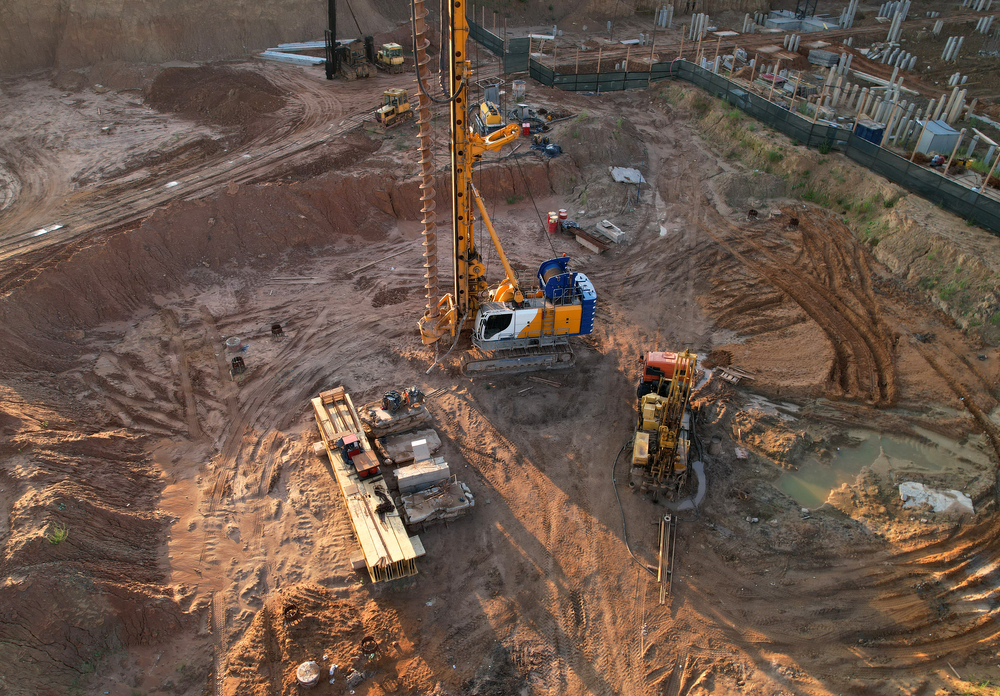About Geotheta
About Geotheta
Blog Article
The Geotheta Ideas
Table of ContentsGet This Report about GeothetaGeotheta Fundamentals ExplainedThe Best Guide To GeothetaThe Definitive Guide for GeothetaWhat Does Geotheta Mean?

They conduct website examinations, accumulate samples, execute laboratory examinations, and examine information to evaluate the suitability of the ground for building and construction projects - Tailings Engineer. Based on their findings, geotechnical designers provide suggestions for foundation layout, slope stability, retaining structures, and reduction of geotechnical hazards. They team up with various other professionals, such as designers, architectural designers, and building teams, to make sure that geotechnical factors to consider are integrated right into the total task design and execution
By assessing the habits and residential properties of dirt and rock, they can identify prospective geotechnical threats such as landslides, soil negotiation, or slope instability. Their knowledge assists stop failures or mishaps that might threaten lives and building. Here are some comprehensive responsibilities and obligations of a geotechnical engineer: Site Investigation: Geotechnical engineers conduct site examinations to collect information on subsurface problems.
They translate the information to understand the properties and actions of the soil and rock, including their strength, permeability, compaction qualities, and groundwater problems. Geotechnical Evaluation and Layout: Geotechnical engineers examine the information gathered throughout website examinations to assess the stability and viability of the website for building projects. They execute geotechnical computations and modeling to examine aspects such as birthing ability, negotiation, incline security, lateral earth stress, and groundwater flow.
The 3-Minute Rule for Geotheta
Foundation Design: Geotechnical designers play a critical duty in creating foundations that can safely sustain the intended structure. They evaluate the soil problems and lots demands to figure out the ideal structure type, such as superficial foundations (e.g., grounds), deep foundations (e.g (https://realistic-swam-lvtf1k.mystrikingly.com/blog/unlocking-the-secrets-of-geotechnical-engineers-the-geotheta-advantage)., stacks), or specialized strategies like dirt enhancement. They consider aspects such as settlement limits, bearing ability, and soil-structure communication to create optimal foundation designs
They evaluate building plans, display website tasks, and carry out area assessments to confirm that the style suggestions are complied with. If unanticipated geotechnical problems develop, they assess the scenario and offer referrals for removal or changes to the layout. Danger Analysis and Mitigation: Geotechnical designers assess geotechnical risks and dangers connected with the task site, such as landslides, liquefaction, or dirt disintegration.

Cooperation and Communication: Geotechnical engineers function very closely with other specialists associated with a project, such as designers, architectural engineers, and construction teams. Reliable interaction and partnership are vital to integrate geotechnical considerations into the overall task design and construction process. Geotechnical engineers provide technological competence, answer queries, and ensure that geotechnical demands are met.
The Best Guide To Geotheta
Here are some kinds of geotechnical engineers: Structure Engineer: Foundation engineers specialize in creating and analyzing structures for structures. They assess the dirt conditions, tons needs, and website features to figure out one of the most suitable foundation kind and layout, such as shallow structures, deep structures, or specialized methods like pile foundations.
They evaluate the factors affecting slope security, such as dirt buildings, groundwater problems, and incline geometry, and develop methods to stop incline failings and minimize risks. Earthquake Designer: Quake designers concentrate on evaluating and developing structures to hold up against seismic forces. They evaluate the seismic threat of a website, review soil liquefaction potential, and establish seismic layout standards to guarantee the security and durability of structures during earthquakes.
They perform area screening, gather samples, and examine the gathered data to define the soil buildings, geologic developments, and groundwater conditions at a site. Geotechnical Instrumentation Designer: Geotechnical instrumentation engineers concentrate on surveillance and gauging the habits of soil, rock, and structures. They install and keep instrumentation systems that check factors such as dirt negotiation, groundwater levels, slope movements, and structural displacements to assess efficiency and give very early warnings of potential concerns.
Excitement About Geotheta
They conduct examinations such as triaxial tests, combination examinations, direct shear examinations, and permeability examinations to gather information for geotechnical analysis and design. Geosynthetics Designer: Geosynthetics designers concentrate on the style and application of geosynthetic products, such as geotextiles, geogrids, and geomembranes. They utilize these products to improve soil security, reinforce slopes, give drainage solutions, and control erosion.
They often tend to be investigative people, which means they're intellectual, introspective, and analytical. They are interested, methodical, reasonable, logical, click here for more info and rational. Some of them are additionally social, meaning they're kind, charitable, cooperative, client, caring, helpful, compassionate, skillful, and friendly - Consulting Engineer.
In the workplace environment, geotechnical designers utilize specialized software devices to execute estimations, produce designs, and evaluate information. They prepare reports, evaluation job specs, communicate with customers and staff member, and coordinate project tasks. The workplace setup offers a favorable setting for study, evaluation, and collaboration with other professionals associated with the project.
A Biased View of Geotheta
They regularly check out job websites to carry out site investigations, assess geotechnical problems, and gather information for analysis. These gos to entail traveling to various locations, often in remote or challenging surfaces. Geotechnical designers may do soil sampling, conduct examinations, and screen construction tasks to ensure that the geotechnical elements of the task are being carried out correctly.
Geotechnical designers additionally operate in specialized geotechnical labs. In these centers, they perform experiments, carry out examinations on dirt and rock samples, and examine the design buildings of the products. Geotechnical laboratory engineers function thoroughly in these atmospheres, managing screening devices, running tools, and tape-recording information. They collaborate with various other laboratory staff to make sure exact and trustworthy screening outcomes.
Report this page